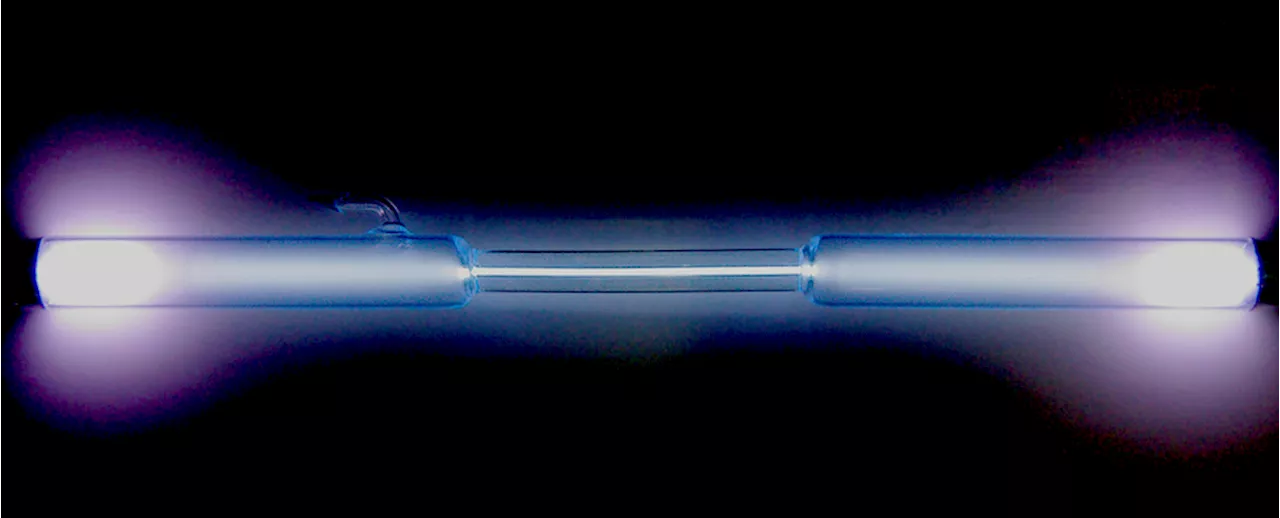Researchers at Linköping University have developed a new method of manufacturing digital memories using xenon gas, allowing for more memory cells to be packed into a smaller space.
The electronics of the future can be made even smaller and more efficient by getting more memory cells to fit in less space. One way to achieve this is by adding the noble gas xenon when manufacturing digital memories. This technology enables a more even material coating even in small cavities. The electronics of the future can be made even smaller and more efficient by getting more memory cells to fit in less space.
One way to achieve this is by adding the noble gas xenon when manufacturing digital memories. This has been demonstrated by researchers at Linköping University in a study published in. This technology enables a more even material coating even in small cavities. Twenty-five years ago, a camera memory card could hold 64 megabytes of information. Today, the same physical size memory card can hold 4 terabytes -- over 60,000 times more information. An electronic storage space, such as a memory card, is created by alternating hundreds of thin layers of an electrically conductive and an insulating material. A multitude of very small holes are then etched through the layers. Finally, the holes are filled with a conductive material. This is done by using a technique in which vapours of various substances are used to create thin material layers. At each point where the three different materials meet in the holes, memory cells are created. Together, the memory cells form a digital memory. The more meeting points, the more information can be stored in memory. This means that more layers with thinner and more holes lead to more memory cells. But this also makes it harder to fill the hole. 'The problem is getting the material into the holes and coating the surface inside the hole evenly. You don't want more material at the opening of the hole -- it clogs the opening, and you can't fill the rest of the hole. The molecules that carry the atoms for the material must be able to get all the way to the bottom,' says Henrik Pedersen, professor of inorganic chemistry at Linköping University. To understand the challenge, the holes to be filled can be compared with the world's tallest building, Burj Khalifa in Dubai, at 828 metres. The holes to be filled are 100 nanometres in diameter and 10,000 nanometres deep, i.e. the ratio is 100 to 1. If this applied to Burj Khalifa, the building would be only eight metres wide at its base. What the researchers at Linköping University have now done is to add a heavy noble gas, xenon, during the actual coating process, which meant that the thickness of the material at the bottom of a hole equalled that at the top. The most common way to do this is to lower the temperature. This slows down the chemical reactions, but also often results in the material having poorer properties. By adding xenon, the researchers were able to use high enough temperatures to achieve really good material quality. 'We don't yet know exactly how this actually works. We believe that the xenon gas helps 'push' the molecules into the hole. This was a genius move by my doctoral student Arun Haridas Choolakkal. He had studied some basic formulas for how gases move and put forward the hypothesis that this should work. Together we set up a number of experiments to test it, and it worked,' says Henrik Pedersen. The researchers have patented the technology and then sold the patent to a company in Finland that has now applied for patents in several countries. 'This was a way to keep the patent alive and the company in question has the resources to develop it further. I think this technology has a good chance of becoming the industry standard,' says Henrik Pedersen
MEMORY TECHNOLOGY XENON GAS ELECTRONICS NANOTECHNOLOGY MATERIAL SCIENCE
United States Latest News, United States Headlines
Similar News:You can also read news stories similar to this one that we have collected from other news sources.
 Xenon gas could protect against Alzheimer's disease: Mouse studyMost treatments being pursued today to protect against Alzheimer's disease focus on amyloid plaques and tau tangles that accumulate in the brain, but new research points to a novel -- and noble -- approach: using Xenon gas.
Xenon gas could protect against Alzheimer's disease: Mouse studyMost treatments being pursued today to protect against Alzheimer's disease focus on amyloid plaques and tau tangles that accumulate in the brain, but new research points to a novel -- and noble -- approach: using Xenon gas.
Read more »
 Xenon Gas Shows Promise in Combating Alzheimer's DiseaseA new study suggests that inhaling xenon gas could potentially treat Alzheimer's disease by altering the activity of microglia, the brain's immune cells. These changes promote the clearance of amyloid plaques, reduce inflammation, and may even support neuronal connections.
Xenon Gas Shows Promise in Combating Alzheimer's DiseaseA new study suggests that inhaling xenon gas could potentially treat Alzheimer's disease by altering the activity of microglia, the brain's immune cells. These changes promote the clearance of amyloid plaques, reduce inflammation, and may even support neuronal connections.
Read more »
 Fuel Station Mix-Up Puts Diesel In Gas Cars And Gas In DieselThe owner of a Jeep Wagoneer filled with diesel had to pay around $1,200 to fix the SUV
Fuel Station Mix-Up Puts Diesel In Gas Cars And Gas In DieselThe owner of a Jeep Wagoneer filled with diesel had to pay around $1,200 to fix the SUV
Read more »
 Gas prices: Gradual increases result in higher gas costs than a month agoPolitical News and Conservative Analysis About Congress, the President, and the Federal Government
Gas prices: Gradual increases result in higher gas costs than a month agoPolitical News and Conservative Analysis About Congress, the President, and the Federal Government
Read more »
 Gas prices: Gradual increases result in higher gas costs than a month agoPolitical News and Conservative Analysis About Congress, the President, and the Federal Government
Gas prices: Gradual increases result in higher gas costs than a month agoPolitical News and Conservative Analysis About Congress, the President, and the Federal Government
Read more »
 Gas prices: Gradual increases result in higher gas costs than a month agoPolitical News and Conservative Analysis About Congress, the President, and the Federal Government
Gas prices: Gradual increases result in higher gas costs than a month agoPolitical News and Conservative Analysis About Congress, the President, and the Federal Government
Read more »
